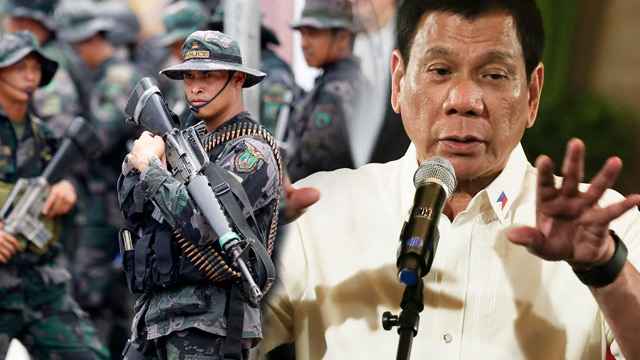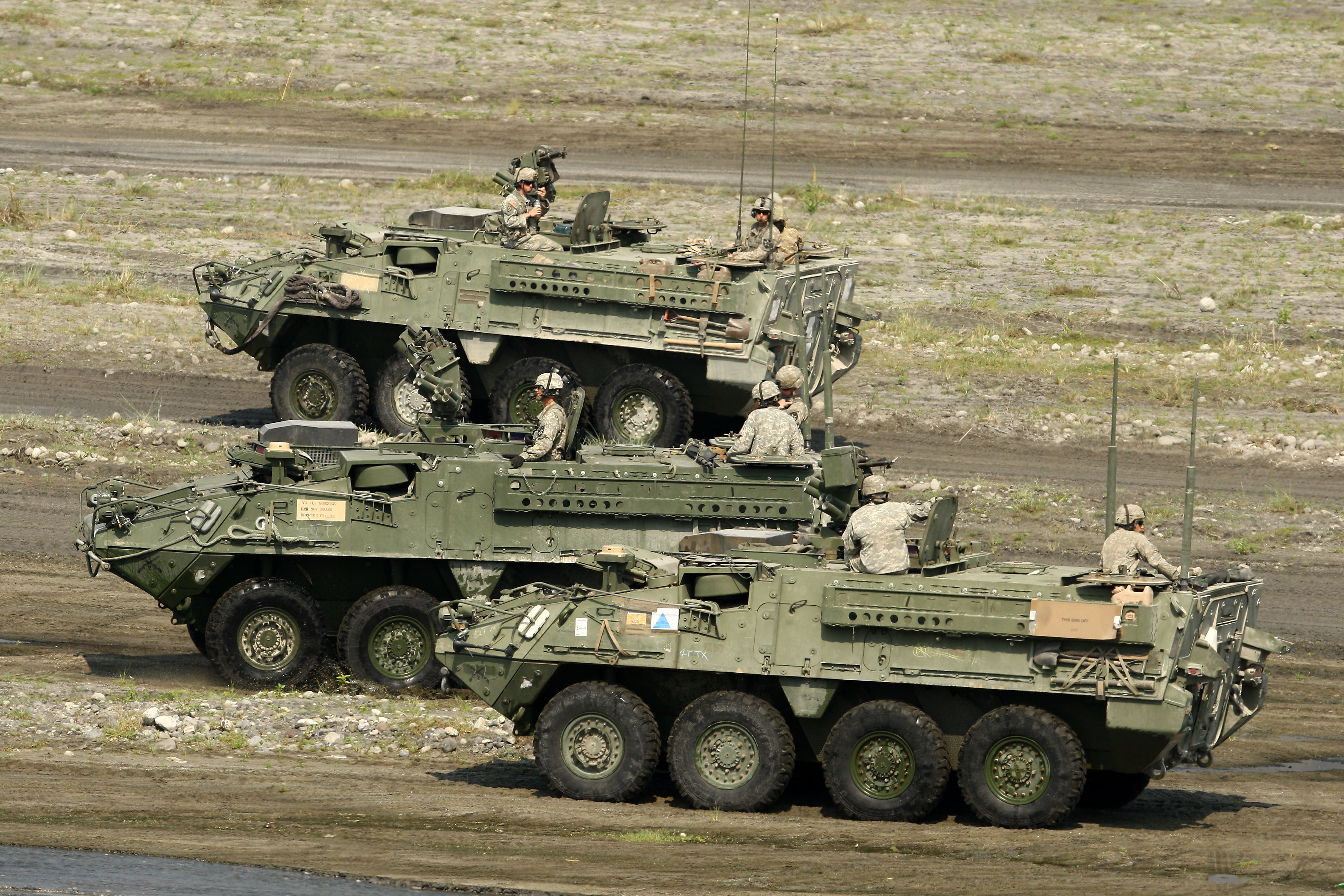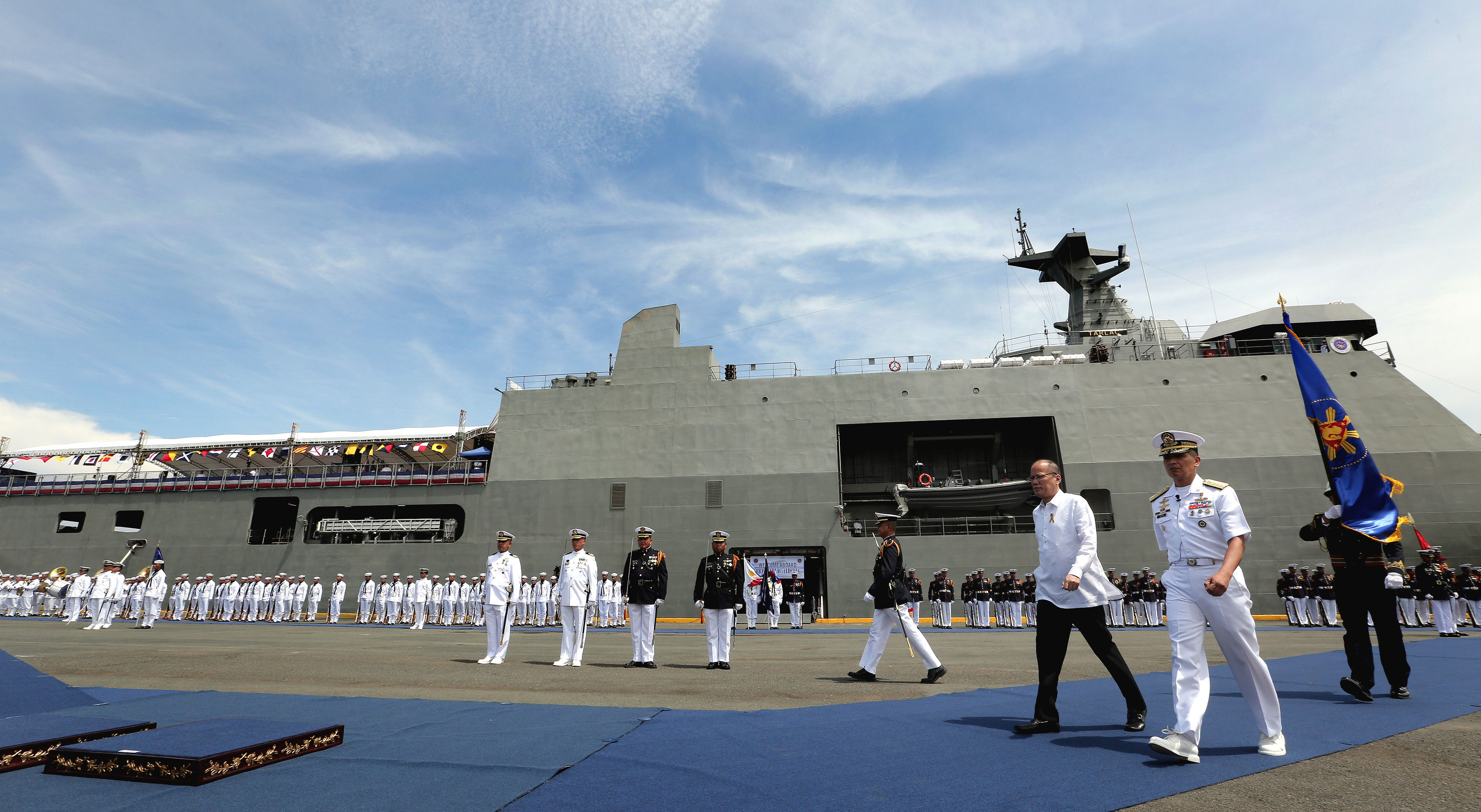 More than ever, the Armed Forces of the Philippines is faced with a very complex and challenging external and internal security environment.
More than ever, the Armed Forces of the Philippines is faced with a very complex and challenging external and internal security environment.
The passage of RA 10349, also known as the Revised AFP Modernization Program, under the administration of former President Benigno S. Aquino III was a recognition of the need to upgrade the lagging capability of the AFP. For many observers, RA 10349 was primarily designed for the AFP to achieve a minimum credible defense status to protect the country’s sovereign territorial interests, if ever the need arises. In short, the focus was more on external defense.
Meanwhile, the current administration of President Digong Duterte stated in no uncertain terms that the AFP’s modernization will continue during his term. However, the priority would be the needs of soldiers engaged in military operations in Basilan, Sulu, Central Mindanao, and other areas in southern Philippines. To do this, the government plans to purchase more protective equipment for soldiers like helmets and vests, more night-fighting systems capability, additional fast crafts for the Navy, additional helicopters capable of night flight for the Navy and Air Force, and more communications equipment.
AFP Chief Lieutenant General Ricardo Visaya confirmed that the military’s modernization shall now be refocused on internal security operations rather than external defense of the country.
For many, AFP modernization is synonymous with upgrading the technology used by the country’s military. And while technology upgrade is a huge component of any modernization program, how things would actually unfold on the ground will actually be influenced by a host of other factors. Farell and Teriff (2002) pointed out how military change is affected by 3 broad factors:
- Strategic developments, in particular, in-state politics and politics within the military organization
- Culture, specifically the need to emulate another state’s military organization
- Strategy, politics, and culture will interact with technology in affecting military change
Using these parameters, the next section examines the case of the Philippines, in particular, the ongoing AFP modernization program.
The AFP’s strategic environment is now in a state of flux
At first glance, the pronouncement of President Duterte for the military’s modernization to focus more on internal defense might seem to be a reversal of the previous administration’s focus on external defense. Or is it really the case?
A close reading of the previous administration’s 2011-2016 National Security Policy indicates that the government never really put internal security in the back burner. The plan, however, made explicit that the modernization plan of the AFP is geared to address the need to focus on the internal socio-political stability of the country and at the same time, the imperative to exercise full sovereignty on the country’s territory including the protection of its marine and other strategic interests.
In an attempt to stop China's construction frenzy in the rock formations in the South China Sea, the Philippines filed a case against China with the Permanent Court of Arbitration The Hague. The complaint cited China's violation of the United Nation’s Convention on the Law of the Sea to which both countries are signatories. On July 12, 2016, the arbitral tribunal ruled that China has no historical claims on the rock formations bounded by the 9-dash-line.
This seems to be an overwhelming victory for Manila. But not to douse water on the country’s euphoria, Lawrence Martin, a member of the Philippines' legal team in the arbitration proceedings, pointed out that the ruling is just the beginning of an even harder battle for the Philippines. The ruling body has no authority to compel China to follow its decision. Thus, it is imperative for Manila to get as many countries as possible on its side in order to “pressure” China to heed the international court’s ruling. For sure, the continued muscle-flexing of China in the South China Sea will remain a major concern for many years to come.
As of July 28, the following countries have called on China to heed the Hague ruling: United States, Australia, New Zealand, Canada, Japan, and Vietnam. The inability of the ASEAN to issue a joint communique citing the ruling indicates an uphill struggle for the Philippines. Necessarily, to deal with China, the strategy would need to include all channels of negotiation without necessarily foregoing the parallel need to upgrade the current state of the AFP’s capability.
On the local front, the resumption of peace talks with the various insurgent groups is a welcome development. However, the current administration has to do this in a very calibrated manner. An AFP-wide study cited the perceived soft stance of the political leaders toward communist guerillas as one of the main causes for the repeated coup attempts of the AFP in the 1980s and the 1990s.
Although the strategic environment of the military has changed drastically since the last coup attempt, some AFP members still treat insurgent groups with wariness. What may be going for President Duterte’s administration is the good mix of military and political advisers who have a good grasp of the insurgency problem without necessarily ignoring the crucial role of the AFP for internal security operations and thus, the need for its continued capability upgrade.

The culture of emulation with US as the model of military development
From its inception up to today, the country’s military organization was patterned after that of the USA. The National Defense Act of 1935, also known as Commonwealth Act No. 1, stipulates the organization of an independent Philippine Army under the guidance of a Senior Military Adviser, General Douglas MacArthur. Among others, the Act calls for the creation of military districts across the country, the provision for military reserve forces, and the creation of a military academy to train the pool that will comprise the core of future officers of the armed forces.
In the aftermath of the Second World War, two important agreements that initially defined the legal parameters of PH-US security relations were signed. These are the Philippine-US Military Bases Agreement (MBA) and the Philippine-American Military Assistance Agreement (MAA). In furtherance of these agreements, the two countries also signed a Mutual Defense Treaty (MDT) on August 30, 1951.
The treaty stipulates that “an armed attack in the Pacific Area on either of the Parties would be dangerous to its own peace and declares that it would act to meet the common dangers in accordance with its own peace and safety… and in accordance with its constitutional processes” (Mutual Defense Treaty between the Republic of the Philippines and the United States of America).
Through the MBA, the US initially maintained 23 military installations in the country, including the Clark Air Force Base and the naval installation in Subic Bay, for an initial lease period of 99 years. The MBA, however, was amended in 1979 and updated in 1983 to downgrade the lease period to 25 years. The decision to extend the lease period for another 10 years was rejected in a landmark decision by the Philippine Senate in 1991, and the last ship sailed out of Subic Bay in November 1991. In all those years, the US served as the ultimate source, not only of military equipment, but also the doctrines that guide the formation of every Filipino soldier.
The decision not to extend the presence of US military bases in the country resulted in a lukewarm relationship between the two countries. This, however, proved to be just a temporary hiatus in the longstanding Philippine-US relationship.
In February 1998, the Visiting Forces Agreement (VFA) was signed and eventually ratified by the Philippine Senate in 1999. The VFA stipulates the terms and conditions covering US personnel visiting the Philippines for bilateral military exercises. Compared with the earlier MDT, the VFA was treated as an executive agreement that need not be ratified by the US Senate.
The Balikatan 16 Exercises that took place in the country in April is actually one of the many, probably already numbering to hundreds, of exercises between the Philippines and the US military. This year, about 5,000 US, 3,000 Philippine, and about 80 Australian defense personnel, with observers from 12 countries, participated in the Balikatan exercises.

Aside from Balikatan, a number of joint military exercises involving Philippine and US forces have been regularly conducted in the country. As listed in the VFA Commission’s website, there are about 20 of these joint military exercises/activities yearly. Many of these military exercises, including Balikatan, are geared towards improving the interoperability of Philippine and US forces against external aggression. The objective is to improve tactics, coordination, and maneuvers against a hypothetical external threat (Ramos 2005).
With this backdrop of regular military exercises subsumed under the agreed upon protocols of the Visiting Forces Agreement, an Enhanced Defense Cooperation Agreement (EDCA) was agreed upon by the representatives of the two countries and was finally approved in time for the visit of President Barack Obama in the country in April 2014. The US government’s policy of “Rebalance to Asia and the Pacific” strategy is also generally perceived as material to the expeditious approval of the EDCA.One of the highlights of the EDCA is the provision allowing US troops, ships, and planes access to the facilities of the Armed Forces of the Philippines (AFP) to undertake high-impact and high-value security cooperation exercises.
As stated in the signed agreement, the objectives of the agreement include the pursuit of maritime security and maritime domain awareness. More important, however, is the provision to address the Armed forces of the Philippines’ short-term capability gaps and long-term modernization. EDCA would allow the US to upgrade Philippine facilities and infrastructure for joint use of Philippine and US forces in yet to be determined locations within the Philippines. Although its legality was questioned before the Supreme Court, the High Tribunal declared it as constitutional in January of this year.
This extended historical link indicates that the AFP will always look up to the US armed forces as its model of military development. Recently, a steady stream of big-ticket military equipment was handed over to the Philippine armed forces under the US government’s excess defense article and the foreign assistance act. To date, two Hamilton-class cutters – BRP Gregorio del Pilar and BRP Ramon Alcaraz – have been turned over to the Philippine Navy to enhance its seriously depleted maritime assets. Another Hamilton-class cutter commissioned as BRP Andres Bonifacio was turned over to the Philippine Navy last July in a ceremony held in the US. The vessel is expected to sail home by October of this year.
Under President Aquino’s administration, the government also purchased two FA50s. This is the lighter and more affordable version of the T50 developed by the Korean Aerospace Industries (KAI). T50 is a supersonic advanced jet trainer and light attack aircraft jointly developed by KAI and the American aerospace company Lockheed Martin. (READ: Aquino and the PH military: Toys for the big boys)
The Philippine military has also explored other sources for its military upgrade. An example would be the recently delivered BRP Tarlac which is a Makassar class landing platform dock made in Indonesia and was officially commissioned on May 16 of this year.
 The ratification of EDCA by the Supreme Court on January 12, 2016, means an even greater presence of US Forces in the country, and, most likely, even closer military relations between the two countries. Undoubtedly, the AFP has been open in exploring different models of change for its modernization but the long-standing close relations between the Philippines and the US is way too entrenched and will always be a huge factor in the consciousness of individual members of the AFP.
The ratification of EDCA by the Supreme Court on January 12, 2016, means an even greater presence of US Forces in the country, and, most likely, even closer military relations between the two countries. Undoubtedly, the AFP has been open in exploring different models of change for its modernization but the long-standing close relations between the Philippines and the US is way too entrenched and will always be a huge factor in the consciousness of individual members of the AFP.
In the absence of a more detailed national security strategy of the government, it may be a challenge for the Philippines to independently chart its own course of military modernization. For the Chinese government, the close US-Philippine alliance can pose as an additional thorn in the side of the already fragile relations between China and the Philippines.
AFP modernization: the curious cocktail of internal and external security situation, political leadership and the unique culture of the military
President Duterte already gave the assurance that the AFP modernization will continue. However, the external impulses provided by the fluid situation in the South China Sea, coupled with the age-old insurgency problem in the country, continuously provide the shocks shaping the character of the new modernization program.
The AFP, like many military institutions across the world, is steeped in its own culture with their traditions and norms. For some individual members of the military, the communist bogey has been too inculcated into their consciousness to be dismissed notwithstanding the pronouncement of the national government to extend the hand of peace to the members of CPP/NPA.
The Philippine armed forces, partly because of the country’s insurgency problem, has always been dominated by the ground forces, the Philippine Army.
Nonetheless, the growing restiveness in the West Philippine Sea heightened the need to have an invigorated naval forces. The specific sub-culture of each different branch of service will affect the way they react to these impulses.
Eber (2014) pointed out how the military, in contrast to the widely held belief, is not a monolithic institution. It is composed of dynamic groups and communities that actively interact and negotiate with one another. These groups have their own unique interpretation of complex, and, at times, contradicting external and internal imperatives and situations. The reality is that specific groups within the AFP react idiosyncratically to the external stimuli presented by the security concern in the West Philippine Sea, the invigorated relations with the US via the EDCA, and the nagging internal security problem of the country.
There are also specific units within the AFP known for its closer ties with its US counterpart. The Philippine Marines is one of these units. From its inception, the Philippine Marines is known for its close organizational connections with the US Marines. These are reflected in the almost identical uniforms and insignias, training doctrines and operational strategies, as well as the borrowed rituals and traditions from their US counterpart. This uniquely locates the organization vis-à-vis the AFP’s modernization program given that a substantial portion of the equipment upgrade will be coming from the US.
Meanwhile, the leaders and representatives of major service commands have different layers of connection with the national and local political leaders who ultimately would approve or disapprove which, in what numbers, and under what terms the new equipment, personnel upgrade and training would be procured, including the very doctrine that would be adopted as a guide for the AFP’s quest to modernize.
While it may take years, even decades, to catch up with the military capability of our nearest neighbors, the impetus has been initiated, and is now moving with its own momentum that cannot be halted abruptly. Even with the broad policy statement coming from the head of the country to focus more on internal security operations, the commitments made by the previous administration cannot be ignored. In the end, however, all these developments need to go hand-in-hand with the new administration’s pronouncements of pursuing peace negotiations with various insurgency groups.
Ultimately, a broader appreciation of the AFP’s effort to modernize means prioritizing first the basic welfare of the soldiers. In his recent trip to the AFP Medical Center, President Digong Duterte vowed to do just that. Nevertheless, for some groups brutalized by years of costly and heartbreaking fighting, their reservations about the proposed peace process is understandable. In the end, however, successful peace negotiations with various insurgent groups would redound to fewer casualties for all sides.– Rappler.com
Leslie V. Advincula-Lopez is a research associate at the Institute of Philippine Culture, Ateneo de Manila University. She just finished her ASEAN-Fulbright (University of Maryland) research grant on the gains and challenges of the Philippines and the US defense cooperation and is currently working on her PhD dissertation at the Department of Sociology, University of the Philippines in Diliman.